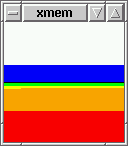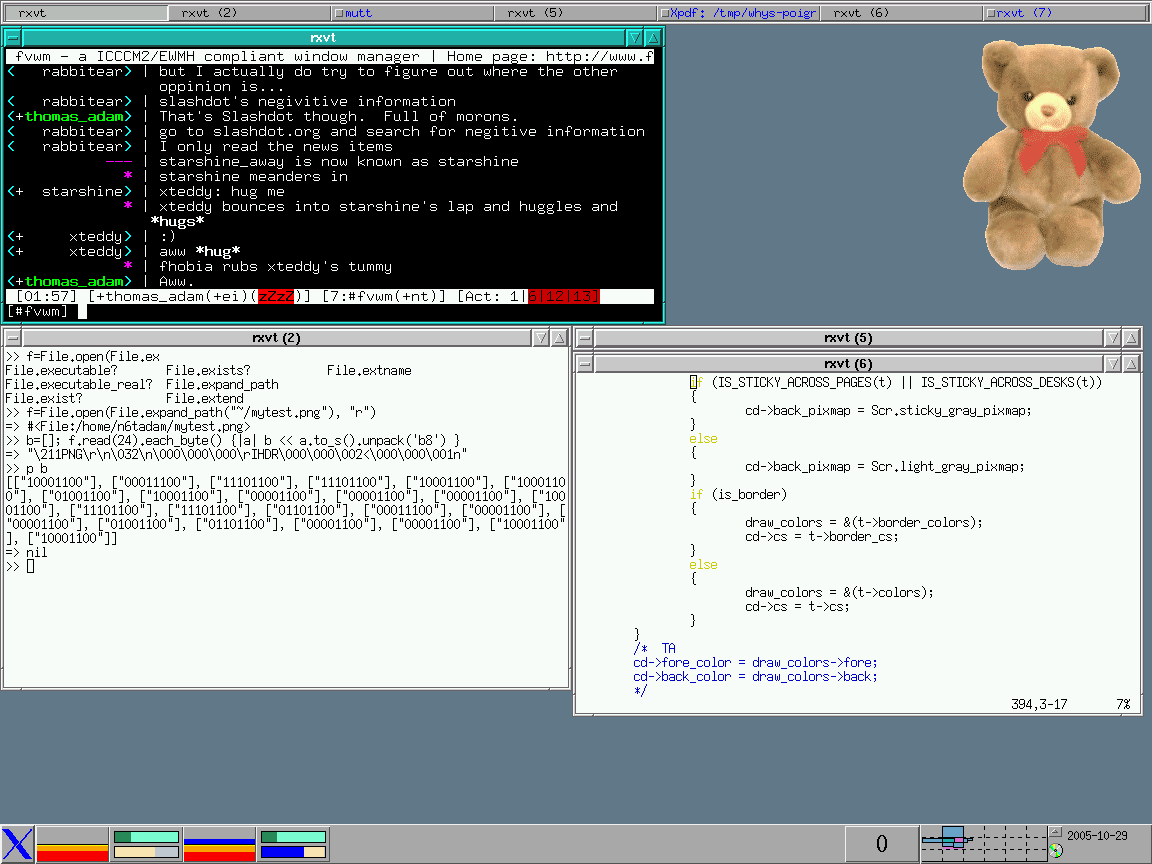OK, so I admit it. I love xmem. It’s such a useful utility which is often overlooked. I don’t know why that is, since it’s very colourful, and looks nice on one’s desktop, if it happens to be rather plain, like mine is. :)
Here’s a screenshot of xmem in action…

Colourful, eh? The colours allow me to see at a glance a rough idea of what the memory usage is overall, for all of the processes running on my computer. The default colours that xmem uses (as per the screenshot above) refer to the following:
- Code – Red
- Cached – Orange
- Buffered – Yellow
- Free – Green
- Swap – Blue
(The white colour at the top is not part of xmem – that’s just the way xmem has scaled itself, such that it hasn’t used the entire window yet).
So given that, xmem can be useful as a monitoring tool. Fluffy (my main server) runs both squid and apache, and given that fluffy only has 64MB of RAM, things can get a little cramped. If I suddenly see that the whole of xmem turns blue (i.e. the swap file’s thrashing), then I know that something is odd, and I can easily find out which processes are eating up so much RAM.
I said earlier that xmem can brighten up one’s desktop. Indeed, as I use FVWM in a rather archaic fashion, it seems fitting I should like xmem. :) Here’s a full screenshot showing xmem (plus other applications) in action.

Nice, isn’t it? (Just look at the colour it brings) :) Those of you using FVWM, and now realise that you just can’t live without it, can swallow it into FvwmButtons like this:
*FvwmButtons: (1x9, Back darkgrey, Frame 1, Swallow \
(UseOld,NoClose,Respawn) "xmem" "Exec exec xmem -nolabel \
-jumpscroll 1 -update 1 -bg darkgrey")
Also, here’s a copy of my XMem entries in ~/.Xdefaults
XMem*Label*Justify: left
XMem*JumpScroll: 1
XMem*internalBorderWidth: 0
XMem*showGrip: FALSE
XMem*codecolor: red
XMem*cachedcolor: orange
XMem*buffercolor: yellow
XMem*freecolor: green
XMem*swapcolor: blue
Links to Other Xmem sites
I didn’t find much on this, but the following might be of interest.